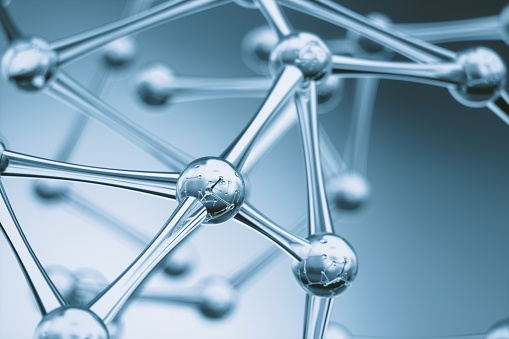Sugar and Cane: Unlocking the Secrets Behind Their Sweet Appeal
Sugar and Cane: Unlocking the Secrets Behind Their Sweet Appeal
Blog Article
Why Cane Sugar Processing Chemicals Are Important for Modern Sugar Refining
The duty of walking stick sugar processing chemicals in modern sugar refining can not be overstated, as they are integral to enhancing both the efficiency of removal and the overall high quality of the final product. Representatives such as phosphoric acid and details flocculants are utilized to eliminate contaminations, resulting in sugar that not just meets customer assumptions yet likewise sticks to sector requirements.
Duty of Processing Chemicals
The efficacy of walking cane sugar processing hinges considerably on the critical application of handling chemicals. These chemicals play a critical role in improving the efficiency and high quality of sugar removal and refining. From the first phases of juice removal to the final filtration steps, processing chemicals facilitate different vital procedures.
In the extraction stage, chemicals such as phosphoric acid and calcium hydroxide are used to enhance the clarification process, helping to get rid of impurities and put on hold solids from the walking cane juice. This not just enhances the return yet additionally makes certain the clearness of the end product. Additionally, representatives like flocculants help in the fast settling of pollutants, consequently enhancing the total process.
As the processing developments, chemicals are used in decolorization and condensation phases. Activated carbon and ion exchange resins serve to get rid of color and odor, ensuring that the polished sugar satisfies consumer top quality criteria. Inevitably, the role of processing chemicals prolongs past functional efficiency; they considerably affect the sensory attributes of the end product, contributing to market competition. Therefore, the meticulous option and application of these chemicals are essential for accomplishing optimum outcomes in walking cane sugar handling.
Key Types of Chemicals
Cane sugar handling counts on a selection of key chemicals that assist in each phase of manufacturing. These chemicals play vital duties in clarifying, bleaching, and cleansing the sugar drawn out from walking stick.
One main category of chemicals includes flocculants, such as polyacrylamide, which help in the clarification procedure by advertising the aggregation and settling of pollutants. Additionally, calcium hydroxide is commonly utilized to reduce the effects of acidity and aid in the elimination of non-sugar parts.
Bleaching representatives, such as turned on carbon and sulfur dioxide, are utilized to decolorize the syrup, leading to a more clear end product. These chemicals assist remove color compounds that may influence the sugar's appearance and marketability.
Moreover, phosphoric acid functions as a pH regulator during the handling phases, guaranteeing optimum problems for the chemical activities entailed in sugar extraction and purification.
Other important representatives include edta (ethylenediaminetetraacetic acid), which chelates steel ions that might catalyze unfavorable reactions, and sodium hydroxide, which helps in pH control throughout the refining procedure. Collectively, these chemicals enhance effectiveness and ensure a high-quality walking stick sugar item.
Advantages for Sugar Top Quality
Commonly overlooked, using specific processing chemicals considerably improves the total high quality of walking cane sugar. These chemicals play a critical role in refining procedures, guaranteeing that the end product fulfills rigorous sector requirements for purity and preference.

Furthermore, refining chemicals help in attaining a constant granulation and texture, which are critical for customer acceptance. By regulating the formation process, these chemicals ensure that the sugar crystals form consistently, leading to a more enticing item that liquifies well in numerous applications.
Moreover, using these chemicals can improve the life span of cane sugar by lessening wetness absorption and microbial development. Overall, the calculated application of processing chemicals is vital for delivering high-quality walking stick sugar that meets consumer assumptions and sector needs.
Environmental Influence Considerations

Furthermore, the energy-intensive nature of sugar refining, compounded by chemical usage, usually results in raised carbon discharges. This adds to climate adjustment and elevates problems regarding the sustainability of present refining techniques. Additionally, the sourcing of these chemicals may include techniques that endanger biodiversity, such as monoculture farming, which reduces the strength of farming environments.

To alleviate these effects, sugar refiners are significantly exploring lasting options and embracing ideal techniques that minimize chemical use. Implementing extensive environmental management systems can aid ensure that the refining procedure lines up with ecological criteria and promotes biodiversity. Eventually, a well balanced strategy that focuses on both sugar top quality and ecological stewardship is necessary for the long-term practicality of the sugar industry.
Future Trends in Refining
As the sugar market faces the ecological obstacles linked with traditional refining approaches, innovative approaches are emerging to improve both performance and sustainability. One substantial pattern is the adoption of eco-friendly chemistry concepts, which prioritize making use of non-toxic, naturally degradable handling chemicals. This change not only minimizes environmental impact yet additionally addresses customer demand for cleaner manufacturing methods.
One more encouraging advancement is the execution of sophisticated purification innovations, such as membrane splitting up and adsorption processes. These methods enhance the quality and quality of the sugar while lowering the volume of wastewater generated during refining. Furthermore, his response the integration of digital technologies, consisting of IoT and AI, is transforming functional effectiveness by allowing real-time tracking and anticipating upkeep, thus lessening resource waste.
Moreover, the use of byproducts from sugar refining, such as bagasse and molasses, is acquiring grip. These materials can be transformed right into biofuels or value-added items, adding to a circular economy within the sector. Jointly, these patterns indicate a change in the direction of more lasting practices that not just enhance operational efficiency but likewise align with worldwide sustainability objectives, making certain the future viability of sugar refining.
Final Thought
Cane sugar handling chemicals are crucial in contemporary sugar refining, significantly boosting the effectiveness and quality of sugar removal. The calculated use these chemicals not just boosts the purity and taste of the last item yet also makes certain regular condensation and structure. As the industry significantly focuses on sustainability, the adoption of environmentally-friendly processing agents is most likely to shape future patterns in refining, ultimately resulting in better items and extended service life for customers.

Eventually, a balanced strategy that prioritizes both sugar quality and environmental stewardship is important for the long-lasting practicality of the sugar sector.
Walking stick sugar handling chemicals are necessary in modern-day sugar refining, significantly enhancing the performance and high quality of sugar removal.
Report this page